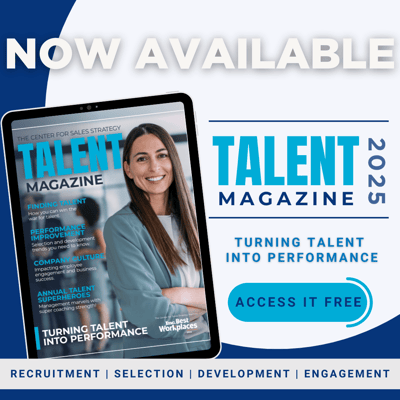
With the current talent shortage, it's difficult to recruit, select, and develop top talent.
Hiring and developing superstars can be really hard, but there are a few steps you can take to bring the right people on board and develop their talents, so they stay with your organization.
The best managers follow three important steps when identifying and developing top talent. These are not the only steps, but these are three crucial steps.
Steps to Identifying and Developing Top Talent
Step 1: Create a List of What You Need
 Do a thorough job analysis and write down the specific talents, skills, and experiences that a person would need to be successful in the position.
Do a thorough job analysis and write down the specific talents, skills, and experiences that a person would need to be successful in the position.
Consider the following:
- Required vs. Desired Talents
- Developed vs. Trainable Skills
- Mandatory vs. Preferred Experience
This is like creating a shopping list for the grocery store. If you don’t think about it and write it down, you will buy things you don’t need and forget things you need.
This list will help you nail down exactly what you need in the position, so you hire the right person. When you match this list with the talent assessment in step two, which is coming up next, you can, at a glance, look for your required talents and pass on the candidates who aren’t innately wired to do the job with excellence. This will help you spend your time with the right candidates in your face-to-face interviews.
Step 2: Use a Validated Talent Assessment
It’s important to consider talents, skills, and experiences when selecting the right person for a job. All three are important, but talent is the most important part and the greatest predictor of success.
Talents are innate abilities that you cannot teach, and they're difficult to spot which is why it’s important to use a role-specific talent assessment. That way, you know the intensity level of the candidate’s talents and how that matches up with what you need.
Knowing exactly how a candidate is wired before you meet with them face-to-face will allow you to ask better interview questions and determine their fit for the position, the team, and the company.
Step 3: Create a Development Plan After You Make a Hire
It’s not enough to hire highly talented people. You must also invest in them by coaching them and creating priority strategies to maximize their talents.
The talent assessment allows you to understand the individual’s strengths and weaknesses, so you can identify strategies to maximize their top strengths and workaround any weaknesses that might get in their way.
Coaching them to use their strengths and supporting them in areas of weakness will help them reach their full potential.



